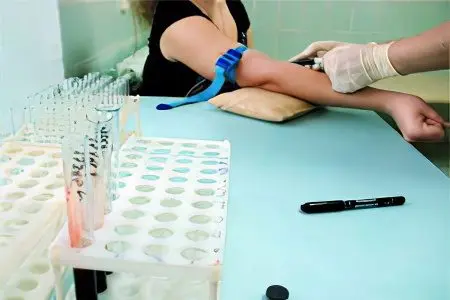Child from an HIV-infected mother (father)

Human Immunodeficiency Virus (HIV) is a dangerous slowly progressive disease of the immune system that gradually weakens human immunity, which leads to various infections and tumors. Ultimately, HIV reaches a stage at which, due to the weakening of the immune defense, the patient develops tumor or secondary infectious diseases. This stage is called acquired immunodeficiency syndrome or AIDS. HIV infection affects both adults and children.
The virus can be transmitted to a child from an infected mother. Infection can occur during fetal development, during childbirth or breastfeeding. Under normal conditions, the placenta that connects the mother and fetus protects the fetus from various infectious agents, such as HIV, contained in the mother’s blood. But if the placental membrane is damaged or inflamed, its protective properties are significantly reduced, and there is a high probability of virus penetration. On average, the risk of having a child with HIV infection is about 50%.
Men and women with HIV infection should always consult a doctor before deciding on pregnancy. Thanks to modern methods of medical intervention, the risk of transmitting the virus to a child can be significantly reduced. During pregnancy, an HIV-infected woman should be monitored regularly by a qualified obstetrician. Only he prescribes all preventive treatment. If you feel unwell after taking any drug, you must immediately tell the doctor about it – you cannot change the treatment yourself.
Often the question arises about the risk of having a child with HIV infection if only the father is infected. Perinatal transmission of the virus occurs through the mother. In order for an HIV infection to be transmitted to a fetus, the mother must be infected with the virus. At the time of conception, even if the father is infected and the virus is present in high concentrations in his semen, only the woman is at risk of infection – through infected semen.
According to all studies, the virus cannot penetrate into the germ cells of the sperm – spermatozoa, but they enter the embryo. If during sexual intercourse, which led to the conception of a child, the virus was transmitted to a woman, then the risk of infection of the fetus exists – since its development will occur against the background of the intensive development of HIV in the mother.
If, however, during the conception of a woman’s infection did not occur, which can be confirmed by special laboratory tests, and a woman will always use a condom during her later sexual life with a partner, then there is practically no chance of infection of the child. Infection of a child with HIV becomes obvious not immediately. In the first or second year of life, disorders begin in about 10-20% of children. For the rest, the first symptoms of the virus may appear many years later.
Half of children with HIV infection are diagnosed with AIDS by the age of three. With a disease that began after infancy, there may be an alternation of periods of illness and periods of time with relatively good health. Acquired HIV during adolescence may cause subtle symptoms or no symptoms at all for several months or years (approximately the same HIV infection occurs in adulthood).
As the child’s immunity declines, many complications and symptoms occur. Approximately 30% of children with HIV infection, usually in the first years of life, develop pneumonia. With a significant lesion of the lungs, a thickening of the terminal phalanges of the fingers and a cough develop. Pneumonia is also a very dangerous complication in children with AIDS. Pneumocystis pneumonia, as a rule, children with congenital HIV suffer at least once in the first fifteen months of life.
HIV-positive children need constant medical supervision and treatment. If the social welfare authorities function normally and there is the possibility of visiting doctors at home, then children have the opportunity to spend more time not in the hospital, but at home. The decision to attend school or kindergarten should be taken together with the doctor – there is a possibility of contracting infectious diseases.
Tuberculosis in HIV-infected people

The combination of HIV and tuberculosis in infected people is quite common. In countries where HIV is particularly prevalent, about 40% of patients diagnosed with tuberculosis are also infected with HIV. People who are infected with TB and HIV at the same time are at highest risk. Each year, they are significantly more likely to develop TB than the rest of the population in a lifetime. To date, it is known that HIV and tuberculosis can be combined in three ways:
Primary infection with tuberculosis in people with HIV infection.
Simultaneous infection with HIV and tuberculosis.
The development of tuberculosis due to immunodeficiency that occurs with HIV infection.
It has been proven that HIV leads to death and affects the cells that play a major role in protecting the body from tuberculosis. Their decrease in the human body significantly disrupts cellular immunity. This factor is one of the reasons for the frequent combination of HIV infection and tuberculosis.
[Video] HIV and AIDS – causes, symptoms, pathogenesis, diagnosis, treatment:









